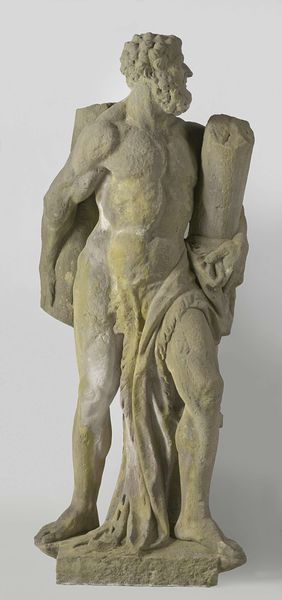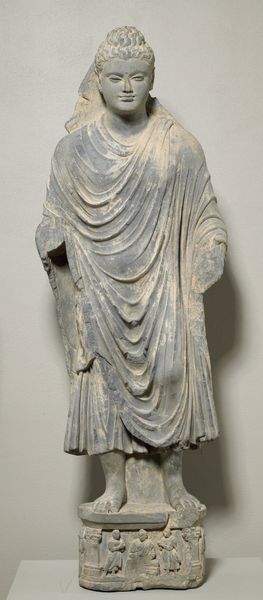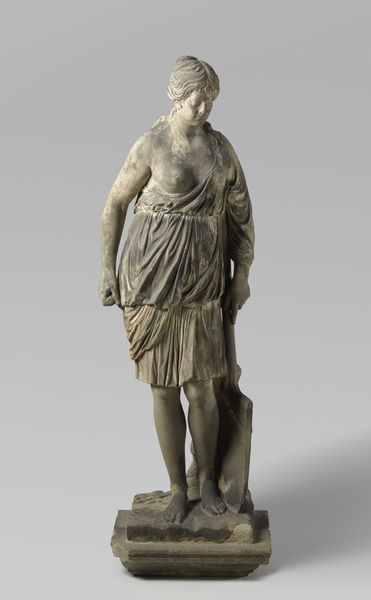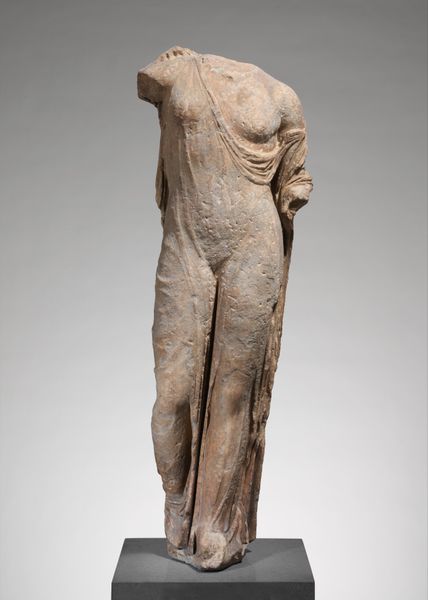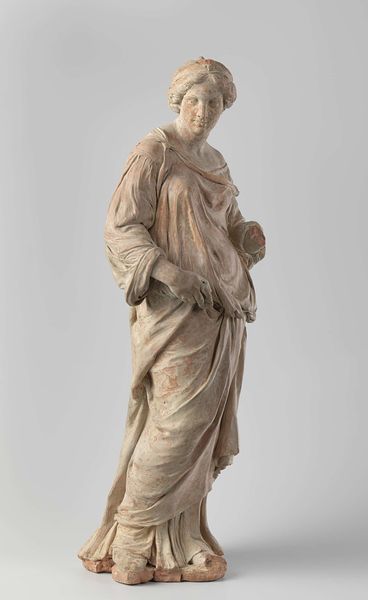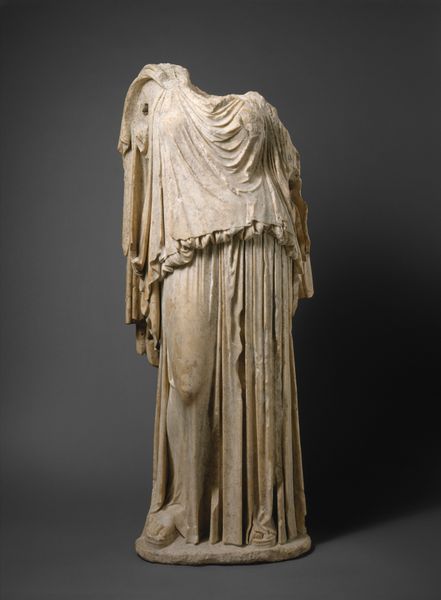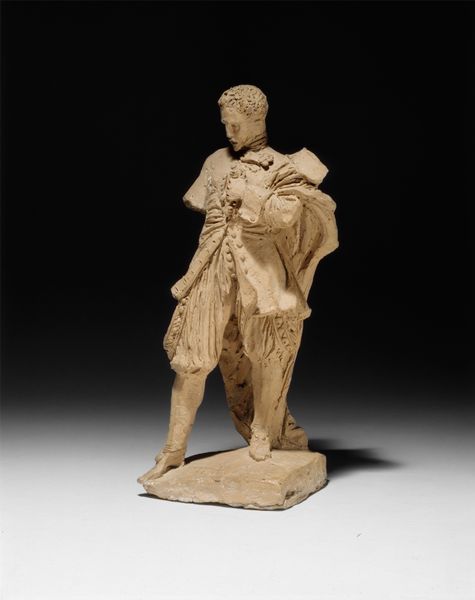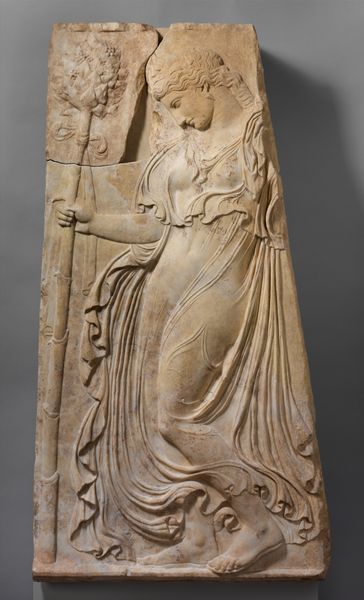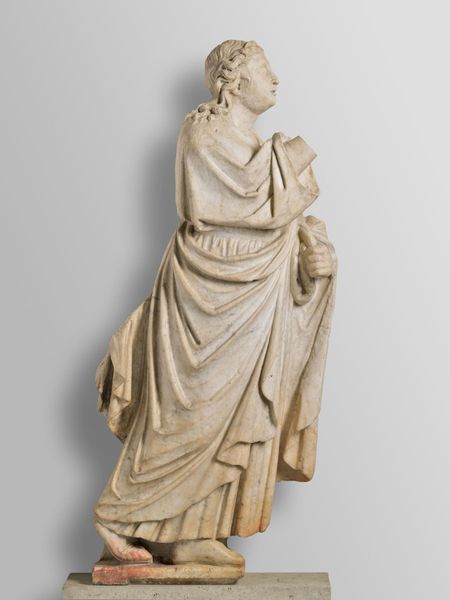
sculpture, marble
#
sculpture
#
asian-art
#
figuration
#
ancient-mediterranean
#
sculpture
#
men
#
marble
Dimensions: H. 64 1/2 in. (163.8 cm)
Copyright: Public Domain
Curator: Here we have the "Torso of a Bodhisattva," a sculpture likely created in the Sahri-Bahlol Workshop sometime between 350 and 550 AD. It now resides at the Metropolitan Museum of Art. Editor: What strikes me immediately is the drapery. Look at those lines, how they suggest both weight and flow simultaneously. It makes me think of wet linen clinging to skin, incredibly sensuous despite the figure being incomplete. Curator: Absolutely. And note that this carving would have demanded exceptional skill. Marble, while beautiful, is not the easiest material to work with; each line and fold had to be meticulously planned and executed. You really get a sense of the laborious process that transformed a raw block into something so refined. Editor: Yes, it does raise questions, doesn’t it? How were workshops like Sahri-Bahlol structured? What was the division of labor like? It's easy to romanticize artistic creation, but at the end of the day, someone had to haul the marble, someone had to chip away at the excess, someone had to polish… and how were their hands? Rough, calloused no doubt. Hands that likely didn’t look nearly as divine as this torso. Curator: A poignant point! And beyond the material, look at how they depicted the body. The emphasis is not just on anatomical accuracy, but on conveying a sense of inner peace and strength—the embodiment, literally, of enlightened being. There’s something both idealized and very human in the form, wouldn’t you say? It feels close enough to be attainable. Editor: To be fair, even missing its head and limbs, the way light catches the marble, almost caressing its surfaces. Even broken, even aged, you can still feel that power in it—something resonant in the here and now. Curator: Agreed. It feels as if we’re not just gazing at a remnant of the past but rather connecting with a moment, that feels very eternal and now. Editor: It really puts the craft in "artifact," doesn't it? And it really challenges this Western high/low dichotomy that so much art ends up mired in. Food for thought for both makers and appreciators, indeed!
Comments
No comments
Be the first to comment and join the conversation on the ultimate creative platform.
